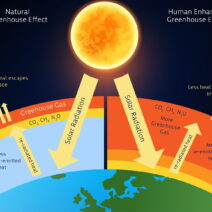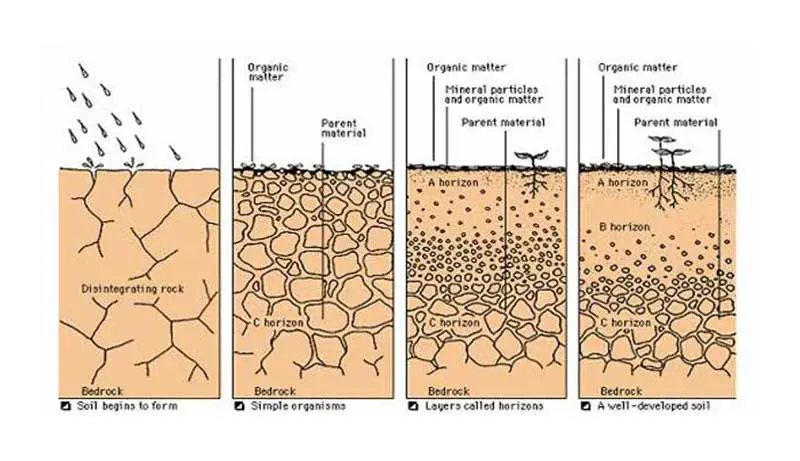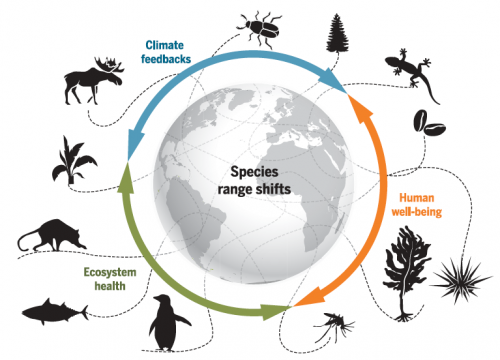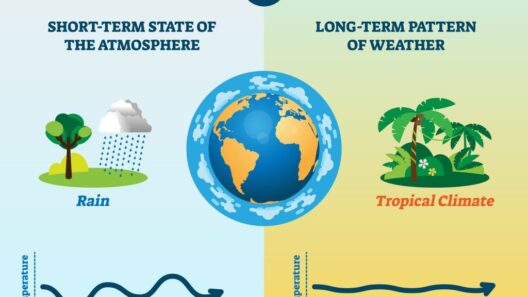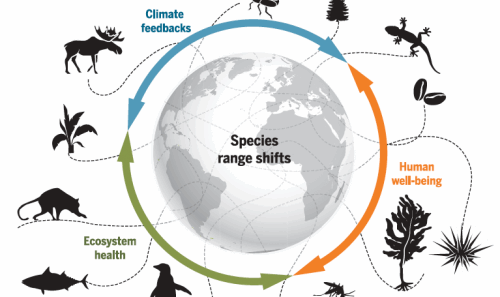Soil is a vital, complex ecosystem that serves as the foundation for terrestrial life. It influences agriculture, water retention, and carbon sequestration, all of which are crucial for sustaining human life and protecting our planet. However, the relationship between soil and climate is intricate and multifaceted. This article delves into how climate affects soil formation and characteristics, exploring various climatic factors and their long-term implications.
The concept of climate encompasses several elements, including temperature, precipitation, humidity, and atmospheric pressure. These factors collectively contribute to soil formation processes, as well as to the degradation and evolution of existing soil. One glaring observation is the stark contrast in soil characteristics across different climatic zones. For instance, fertile black soils found in temperate regions markedly differ from the arid, sandy soils characteristic of desert environments. Diving deeper into these differences unveils the underlying reasons for such variability, prompting intrigue as to how climate influences these transformations.
Temperature is perhaps the most direct climatic factor affecting soil. In regions with higher temperatures, increased rates of mineral weathering occur. This accelerated process results from the heightened chemical activity facilitated by warmer temperatures. As minerals decompose more rapidly, essential nutrients are released into the soil, influencing its fertility. However, in extremely hot climates, soil formation may stall due to water scarcity, leading to the development of less productive soils, such as laterites that contain high iron oxide concentrations. The contrast between these extremes reveals not just a difference in nutrient content but also variations in microbial activity, which plays a crucial role in nutrient cycling and organic matter decomposition.
Precipitation patterns significantly affect soil moisture content, which in turn influences soil structure and composition. Areas with ample rainfall often foster rich, diverse ecosystems where soil develops layers. The leaching of minerals, an effect of excessive rainfall, leads to nutrient depletion in surface layers. Conversely, regions with scant precipitation tend to develop soils that are less leached, retaining a higher concentration of nutrients. However, these soils often face issues of water retention and organic matter decay, limiting agricultural productivity. This phenomenon illustrates a delicate balance that farmers must navigate when cultivating crops in different climatic zones.
The interplay of temperature and precipitation results in various soil types that are adapted to specific climatic conditions. For example, tundra soils in Arctic regions exhibit a high saturation of moisture and organic matter due to persistent cold temperatures, which impede decomposition processes. This accumulation leads to the formation of peaty soils rich in carbon but poor in readily available nutrients. Such soils underscore the complexity and significance of climate in dictating not just soil properties but the entire ecosystem that relies on these soils.
Humidity is another vital component that affects soil characteristics. Areas with high humidity often experience accelerated organic matter breakdown, enriching the soil with nutrients. However, excessive humidity can also foster conditions conducive to the development of anaerobic soils, where oxygen scarcity limits biodiversity and microbial activity. These anaerobic soils can be notorious for being less fertile, adversely affecting agricultural outputs.
The role of climate change in shaping soils cannot be overstated. As global temperatures rise, patterns of precipitation are becoming increasingly erratic. Regions historically suited for agriculture may face declining soil quality and productivity due to changes in moisture availability and nutrient dynamics. Soil erosion, exacerbated by extreme weather events such as heavy rainfalls or prolonged droughts, threatens the very existence of agricultural soils worldwide. This alarming trend calls for immediate attention from agricultural planners and policymakers to implement adaptive management strategies.
Moreover, changes in vegetative cover due to climatic shifts also influence soil formation. Vegetation plays a dual role: it protects the soil from erosion while simultaneously contributing organic matter through litterfall. The absence of vegetation in altered climates, often due to adverse weather conditions, exposes soils to erosion and degradation. Nonetheless, climates that foster robust plant communities may promote the development of rich, organic soils full of nutrients, underscoring a direct correlation between climate health and soil vitality.
Carbon cycling is yet another critical aspect of how climate influences soil formation. Soils act as significant carbon sinks, sequestering carbon dioxide from the atmosphere. Warmer temperatures and altered precipitation patterns can disrupt this balance, leading to increased carbon release and exacerbating climate change. Thus, understanding the intricate connections between climate and soil is pivotal for addressing global challenges posed by climate change.
As humanity moves further into an era of environmental change, the relationship between soil and climate becomes increasingly relevant. Soil, often viewed merely as a substrate for agriculture, is a dynamic entity shaped by complex interactions with climatic factors. Understanding these relationships is essential for maintaining soil health, fostering sustainable agricultural practices, and addressing broader environmental crises. The more we appreciate the subtleties of soil formation in response to climatic variations, the better equipped we shall be to adapt and mitigate adverse impacts on this invaluable resource.
In conclusion, the influence of climate on soil is profound and multifaceted, comprising a system of interactions among temperature, moisture, vegetation, and human activity. Healthy soil is not only essential for food production but also for the overall functionality of our ecosystems. As global climate patterns continue to evolve, proactive measures and thoughtful stewardship become imperative for ensuring that our soils can sustain future generations. The fate of soil, and thus life on Earth, hinges on our understanding and response to these climatic influences.


